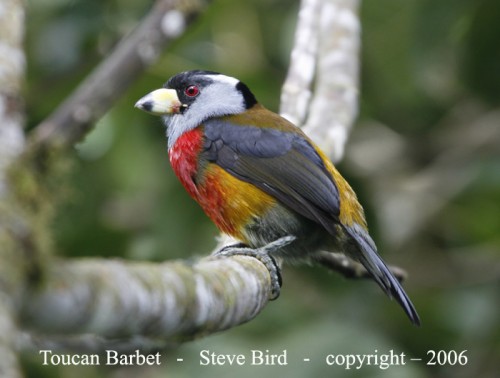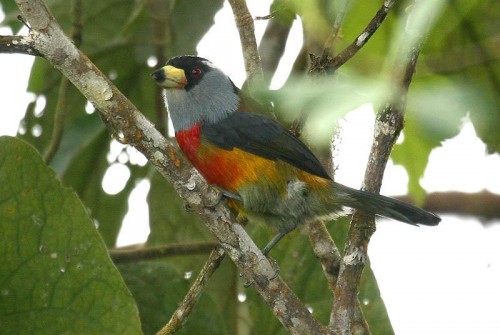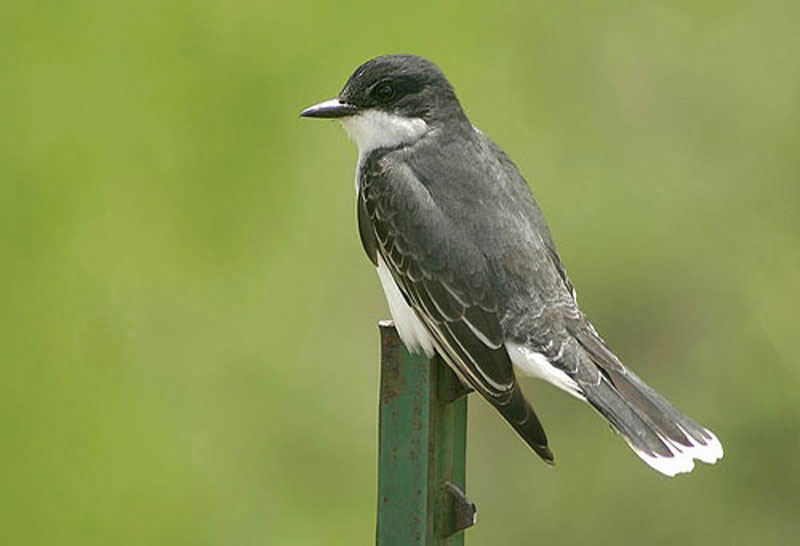Toucan Barbet
The Toucan Barbet or Semnornis ramphastinus is a small bird that can be found in the tropical forests in southwestern Colombia and western Ecuador in South America. Previously, this bird was grouped together with the other barbets in the Capitonidae. However, there were DNA studies which confirmed that this arrangement is paraphyletic where barbets are more closely related to the toucans than the barbets. As a result, the barbet ancestries are now considered to be distinct families and the two only species, Toucan barbet and Prong-billed barbet is now grouped into a separate family of Semnornithidae.
The Toucan barbet is larger than the Prong-billed barbet as an adult toucan barbet is about 19 – 25 centimeters long, with weight between 85 to 110 grams. Toucan barbets are a patterned and colorful bird with a short beak that is large at the base. Both males and females are similar, as they are black around the beak base and have a broad white line behind the eyes. However, the females do not have the stiff tuft on the back of the neck. The juveniles are duller in color.
Toucan barbets prefer wet subtropical forest and mountainous tropical forest with secondary growth and forest edges. They also like open pastures that contain scattered fruit trees. This is because their diet is made up of mostly fruits. It has been recorded that they ate up to sixty-two species of plants and fruits. Apart from that also, the birds also eat insects and other invertebrates such as flowers when there is limited of fruits available.
Toucan barbets are highly social birds and are active during the day. They may be seen in groups of five or six individuals, usually a territorial pair and their young. The birds are early risers and hop on branches and climb using its beak through low bushes from about ground level to the high forest canopy. Sometimes they remain unmoved on the branch. They normally make sound like a song. Their song is form a series of short warning signal like notes repeated many times, such as ‘hawnk’ then followed by ‘ag’. During making this song, their tail is often cocked. Toucan normally found its territory around a roosting and nesting hole in the tree.
The Toucan barbets are unusual among frugivorous birds as when they breed, several helpers will cooperate and assist the dominant breeding pair. The breeding pair and their helpers will also drive away visitors including older offspring and other birds. The number of their eggs laid is not known while the incubation period is commonly about fifteen days. The male Toucan barbets and its helpers will help the female barbets incubate the eggs and raise and fed the young for forty three to forty six days.
While Toucan Barbets remain fairly common locally, they have declined drastically due to the habitat loss and trapping for the cage bird trade. Due to these, Toucan barbets are considered as threatened animals. They are currently can be found in small range of about 20,000 kilometers.




